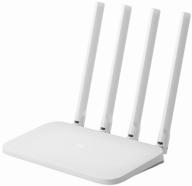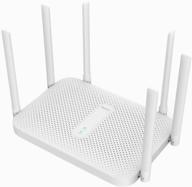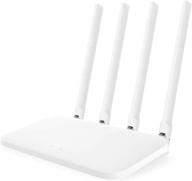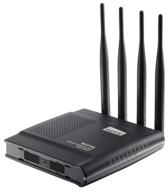
Review on 🔀 D-Link DIR-1750-US Black: High-Speed AC1750 Mesh Smart WiFi Router for Enhanced Home Network Performance, WP3 Support, MU-MIMO & Gigabit Gaming - Dual Band by Shrikant Ojo

He always seems to be looking at me. lol
Almost every consumer grade networking device you can buy today has its pros and cons and quirky or cute little features. Disadvantages are usually poor or improper ventilation, incorrect antennas for operation, and misleading descriptions or information. Surprisingly, the only major downside to the DIR-1750-US router is the built-in software (aka firmware). I was doing what a lot of us who buy routers do when mine arrived. I went into the router settings, set it up the same as my previous router because that's what I wanted, and didn't bother reading any documentation. The router itself is very easy to set up, but the software in the router is very, very ignorant. For example, if you manually change the IP address and LAN range to something the router doesn't like, it will tell you that the new addresses were successfully saved. The router will reboot with the New Economy enabled; except he doesn't. If you didn't like these addresses after a reboot, they weren't saved and you'll see the default LAN IP address and range again. There is no error message or indication that you made a mistake. Technically, you can assign most LAN IPs as static IPs, leaving a small number of addresses as a DHCP pool to allow the router to assign dynamic IPs without changing the netmask. However, if you make the DHCP address pool too small and don't change the netmask, the router will simply hang after a reboot. The hardest part for me was why the router didn't just stop transmitting the WiFi signal for about 30 seconds straight after being on for 2 days in a row and why the ethernet ports on the LAN side of the router suddenly didn't either more randomly responded after 2 days of continuous work. I found out that the router doesn't like me very much because I make typos. lol When setting up an IP address and LAN range for a router, you must not use anything other than authorized and pre-assigned private IP address blocks. As long as the IP address you choose is in one of the three blocks, the router is fine. A block most commonly used for home network devices is 192.168.xxx.xxx but I accidentally entered 192.169.xxx.xxx and it worked. until this happened. For reasons I don't understand, the QoS settings for the QoS mechanism in my router are pretty broken. I had to repeat the same steps three times in a row to save changes, but there was no way to verify they were saved correctly. After I corrected the typo, the QoS settings worked fine and the problems with the WiFi and Ethernet ports are now gone. supports AC1750. The fact is that under good conditions the router can also communicate with, for example, 3 old phones at the same time. Another advantage is the Virtual Local Area Network (VLAN) in the firmware. If you have no other alternative, using a WiFi guest zone for Internet of Things (IoT) or SMART Plugs and Switches offers more security than sharing it on the same WiFi network as your personal devices. The problem is that someday you will have to manually enter or reset the device settings to get it back online. The guest WiFi zone is divided by many routers, which can be a problem. And even better! Buy a WiFi hotspot, connect it to an Ethernet port on your router and assign that port as a VLAN. In a VLAN, only devices connected to that port can communicate with each other. Add the switch to the VLAN along with the access point to add more devices. If you need to connect to a device, you can simply connect to an access point or connect a cable to a switch that you added to the VLAN. Everything within the VLAN, like in the WiFI guest zone, is isolated from the rest of the devices connected to the router. If the router supports up to 20 or 30 wireless clients simultaneously, this includes the wireless guest zone. I have easily combined over 20 SMART sockets, wall switches and dimmers. A VLAN gives you something a wireless guest zone can't: room to expand. Speaking of the DIR-1750-US, since I'm not a network guy and don't want to mess with networks, the router works. best when treated in two ways. Plug and Play works best if you only need one router and want to avoid some of the router's quirks caused by its firmware. The setup wizard is quick, easy, and does most of the work for you. If you want to use some of the more granular features and controls in the router settings, think of the router as a device somewhere between a home OpenWRT router and a corporate router. The software seems to have very specific rules for playing with certain settings, so things can go wrong. All in all though, this is a really good router. It's an ugly router unless you're into gaming or macho, but there's nothing a well-ventilated bag can't fix. giggle
- Complete kit
- Empty
New products
Comments (0)
Top products in 📶 Wifi Routers
Another interesting products
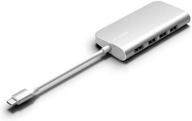
🔌 Juiced Systems Silver BizHUB USB-C Multiport Gigabit HDMI Hub with 3 USB 3.0 Ports, Gigabit Ethernet, 4K HDMI, SD/Micro SD, and USB-C Power Delivery

11 Review
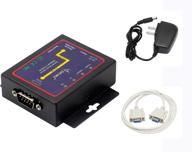
🔌 CERRXIAN RS232 to Ethernet Serial Device Server - TCP/IP Converter with 1Port DB9 RS232 Serial to Ethernet Connectivity

3 Review
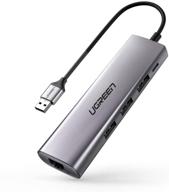
UGREEN USB 3.0 Ethernet Adapter Hub with RJ45: Fast Gigabit Ethernet Converter, 3 Ports USB 3.0 Hub Compatible for MacBook, iMac, Surface Pro, Chromebook, Laptop, PC

11 Review
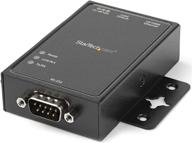
🌐 StarTech.com NETRS2321P: 1-Port RS232 to Ethernet IP Converter, Serial over IP Device Server - Black

5 Review


